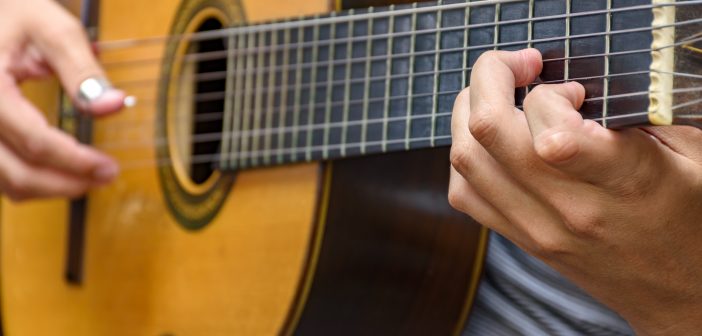Bossa Nova was one of the most popular and characteristic musical movements of the twentieth century, which saw thousands of artists, mostly composers and poets, record and perform beautiful songs throughout the 1960s
Bossa Nova to this day remains one of the most distinctive and definitive sounds of Brazil’s twentieth century popular culture. It was a musical movement that was started, initially, by composers (and poets), but evolved to become so much more, paving the way for numerous musicians over the last 60 years. In fact some say it isn’t even a genre, but more a style of performance.
Whilst relatively simple in its formation, it is a wonderfully sophisticated and creative style of music; the depth and meaning of its lyrics alone serve as motivation for foreigners to learn Portuguese.
The golden years of Bossa Nova were from 1958 to 1964. The 1950s was a decade of rapid industrialisation in Brazil, one that brought with it a wave of modernity in terms of architecture, design, cinema and music. This was a period of transformation and social change in Brazil, a time of boom that saw plans to build a new capital, Brasilia, in the heart of the country.
Bossa Nova’s rightful birthplace was Rio de Janeiro, in the neighbourhoods of Copacabana, Ipanema and Leblon. University students, poets, and musicians alike, from a raft of different backgrounds, would come together and host jamming sessions in their apartments. Naturally, so as not to disrupt the neighbours, their style and composition gave way to a “softer” type of music than previously popularised, uniting a myriad of influences. With time they realised that they were beginning to define a new sound, of interweaved harmonies and melodies, all set to a soft vocal style and gentle rhythmical percussion.
The emergence of Bossa Nova brought together an unlikely group of performers: Antônio Carlos Jobim, Vinicius de Moraes, Candinho, João Gilberto, Carlos Lyra, Roberto Menescal, Nara Leão, Ronaldo Bôscoli, Baden Powell, Luizinho Eça, the Castro Neves brothers, Newton Mendonça, Chico Feitosa, Lula Freire, Durval Ferreira, Sylvia Telles, Normando Santos and Luís Carlos Vinhas. These musicians, composers and artists, tired of both the overplayed operatic vocals of radio and the rather staid samba scene, were in search of something new, a sound that truly represented the people of Rio and defined the revived spirit of a nation.
Artists such as João Donato and Billy Blanco were already influenced by international superstars like Frank Sinatra and Chet Baker, but Bossa Nova also had something to say, through its lyrics. Rio now had a platform to tell its story, about the lives of the music’s protagonists, a new carefree, urban lifestyle (sun, sea and girls).
There were three architectural elements to Bossa Nova, as we know it today; firstly the vocals and guitar playing of João Gilberto, secondly the composition of Antônio Carlos Jobim and, finally, the lyrics of Vinicius de Moraes.
João Gilberto, having left Bahia in 1950, spent several years looking for work, whilst diligently developing his own unique style of guitar playing. Legend has it that he spent eight months perfecting his trade in his sister’s bathroom. His impact was immediate.
Antonio Carlos Jobim brought to the scene a whole host of musical influences from Europe (Debussy, Ravel), America (Nelson Riddle) and of course Brazil (Pixinguinha, Custódio Mesquita and Radamés Gnatalli). During the day he worked for a record company, whilst performing by night at venues throughout Rio’s southern districts.
Vinicius de Moraes was already a respected poet, playwright and journalist as well as a civil servant with the Brazilian consular services. He met Jobim in 1956, and a successful song-writing partnership soon flourished.
Also of importance was André Midani, the head of an international record label, who was instrumental in the signing of these pioneering artists. Other independent labels – RGE, Elenco and Forma – in addition to releasing Bossa Nova albums, also helped establish a visual identity to the genre; album covers became almost as important as the music.
Although Elizete Cardoso’s 1958 album Canção do Amor Demais, featured songs by Jobim and Gilberto, it was João Gilberto’s 1959 album Chega de Saudade, which showcased songs by Jobim and Vinicius, that is generally considered to be the first authentic Bossa Nova album. Brazilian music would never be the same, and its instant novelty meant that anything vaguely modern or alternative was labelled as being “Bossa Nova”. You could have Bossa Nova fridges, glasses, shoes, pretty much anything.
There were three important factors that helped launch the movement internationally.
The first was the French film production, Orfeu Negro (Black Orpheus). Filmed in Rio in 1959, the score was written by Jobim, Vinicius and guitarist Luiz Bonfá. It went on to be crowned Palme d’Or at the Cannes festival, followed by an Oscar and a BAFTA in the Best Foreign Film category. Bossa Nova was a winner.
The second helped export the genre to American shores. As part of the US government’s “good neighbour” initiative, artists such as Dizzy Gillespie, Charlie Byrd, Herbie Mann and Coleman Hawkins were touring Brazil, and soon began spreading the word back in the US about this new sound. The first Bossa Nova album released in the US was in 1962, Jazz Samba (Bossa Nova as a name had not caught on yet), by jazz artists Stan Getz and Charlie Byrd. The album featured both original compositions and instrumental interpretations of the style. It was a huge success, winning Getz a Grammy. The two-minute version of Desafinado spent ten weeks in the US Billboard Top 40.
The third decisive element was a one-off concert in Carnegie Hall in November 1962, which united an A-list line up of Jobim, Gilberto, Carlos Lyra, Sergio Mendes, Roberto Menescal, amongst others. The concert was a launch pad for several stars in the US.
The infamous ballad, “The Girl from Ipanema” (Garota de Ipanema), was released in 1964, on the Getz/Gilberto album. It remained in the Billboard pop charts for almost two years, won four Grammy Awards, and helped promote Bossa Nova to a global audience. In the same month as its release, however, Brazil was subject to a military coup that would ultimately signal the end of an era for Bossa Nova, and all it stood for.
Whilst the movement itself was relatively short-lived, the music lives on.
Interesting fact
Orfeu de Carnaval, or Orfeu Negro, was the winner of two prestigious awards for Best Foreign Film – the Palme d’Or at Cannes and an Oscar. It was filmed in Brazil with Brazilian actors and has a Brazilian soundtrack. But the production itself is French-Brazilian and the Director, Marcel Camus (who has directed 14 other films, this being the only award winning one) is French. Therefore, the Oscar Academy recognises the award as being French, not Brazilian.
LINKS
Orfeu do Carnaval (Orphée Noir, in French – Watch it here: https://youtu.be/fWIwTOtvbSk)
Orfeu do Carnaval (Orphée Noir, em francês – Assista aqui: https://youtu.be/fWIwTOtvbSk)
Turn up the volume! / Aumente o som!
Baden Powell – Canto de Ossanha
https://www.youtube.com/watch?v=sSaano-0CWYBebel Gilberto – So Nice
https://www.youtube.com/watch?v=Dpcg5Pg4zHY
Carlos Lyra e Paul Winter – Você e Eu
https://www.youtube.com/watch?v=SrIvTAnIzco
Horace Silver – Song For My Father
https://www.youtube.com/watch?v=NFjmWI-d6d4
João Gilberto – Desafinado
https://www.youtube.com/watch?v=g6w3a2v_50U
Luiz Bonfá – Manhã de Carnaval
https://www.youtube.com/watch?v=VZCpLplIx1I
Nouvelle Vague – This Is not A Love Song
https://www.youtube.com/watch?v=RqAPbFm4tXQ
Roberto Menescal e Wanda Sá – O Barquinho
https://www.youtube.com/watch?v=ohNcq_eEU9k
Tom Zé – A Felicidade
https://www.youtube.com/watch?v=im6hPaxs_qw
Ella Fitzgerald – Desafinado
https://www.youtube.com/watch?v=olkt2VpUaTc
Tom Jobim – Samba de Uma Nota Só
Read more about Brazilian lifestyle, travel, tourism and Brazilian and Latin American culture at BBMag the only London-based trilingual publication.
You can also find Brazilian and Latin American service suppliers in London, and internationally, by visiting BBMAG Business Directory.
For more information about Brazil, travelling to Brazil, Holidays in Brazil and Brazilian tourism please also visit VBRATA Visit Brazil Travel Association.
















